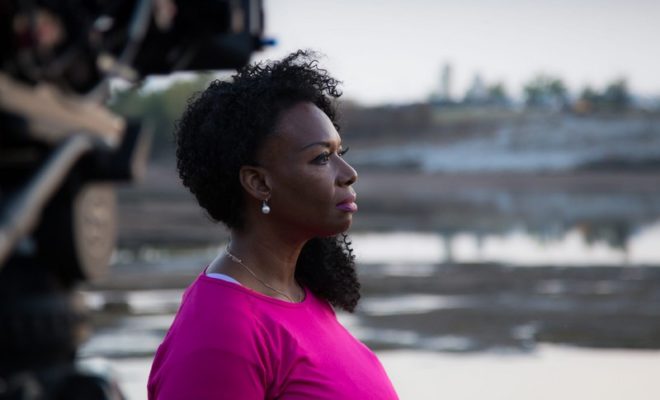
Movie Reviews
Rise Again: Tulsa and The Red Summer
By: Jennifer Vintzileos
A new documentary from National Geographic Rise Again: Tulsa and The Red Summer follows Washington Post reporter DeNeen Brown on her research of the Tulsa Massacre and the ongoing search for mass graves of the victims. Through research, interviews and footage of first-hand accounts from survivors, Rise Again provides an in-depth look at the brewing race war post-Civil War and the events that led up to the Tulsa Massacre.
DeNeen Brown is a reporter that has written prominent pieces for the Washington Post on African American history and has now taken an interest in an ongoing issue: the Tulsa Race Massacre and the process to locate those who perished and were buried in mass graves. To fully understand how the atrocities in Tulsa came to happen, Brown takes the viewer through a comprehensive history of African Americans post-Civil War leading up to the summer of 1919, better coined by writer/activist James Weldon Johnson as “Red Summer.” In addition to Brown’s own words, we hear from several historians, local activists, political figures, descendants of Tulsa residents and past footage of those who lived through the Tulsa Massacre.
After the Civil War the black community embraced their freedom and wanted to have their own slice of the American Dream. They started to pursue higher education, contribute by serving their country in World War I, build thriving businesses and careers, establish towns and make their own fortune. With this newfound freedom the black community also expected to be treated as equals, especially when they were performing the same duties as those of their white counterparts. As a result of their forward momentum beyond slavery, white mobs began to form and attack them for their success—racism proving to still be an issue. Even though the tension simmered for a long time, things came to a head in 1919 through a series of riots—about twenty-six in total.
From accusations of William Brown raping a white woman in Omaha, Nebraska resulting in death and mutilation of his body to the senseless murder by five hundred American soldiers of black sharecroppers in Elaine, Arkansas. World War I veterans pulling black men off the streets and beating them for rumors of women being accosted in Washington D.C. to the Chicago race riots—the United States was a veritable powder-keg waiting to be lit. And when it came to Tulsa all it took was one moment in an elevator: when a young black man named Dick Rowland lost his balance in an elevator and brushed up again elevator attendant Sarah Page. What ensued was chaos as that little touch was then turned into an assault charge and Rowland was now a wanted man for a crime he did not commit. With the match already lit the stage was set for chaos and the bloodbath that followed cost the lives of over three hundred black Americans, along with needless looting and torching of their homes and businesses.
Director Dawn Porter along with DeNeen Brown go above and beyond in Rise Again: Tulsa and The Red Summer. While many of us have only become recently acquainted with the events of Tulsa, this is a story that speaks to the current climate of affairs. Inequality is still an issue that is front and center, even if not to the level of complete atrocity of the Tulsa Massacre. Racial tensions continue to run high and have manifested into new and disturbing ways, as in the deaths of George Floyd, Ahmaud Arbery and Breonna Taylor. And even sadder, the past continues without resolution in the present. In Elaine, they have yet to find where those who perished are buried or build a proper memorial. Men such as Rev. Dr. Robert Turner now use their voice to demand reparations on a regular basis in Tulsa while the excavation efforts continue.
What really got to me were the first-hand accounts from those who lived through the Tulsa Race Massacre—they will make you cry. One account, in particular, came from Dr. Olivia Hooker (1915-2018), an American psychologist and professor. As she watched the war waged on the city from her window, her mother made sure to point out one of the machine guns and noted how there was an American flag, making it clear to young Olivia “that means your country is shooting at you.” Just the knowledge that the country you long to be a part of is ready to come after you is chilling.
While the events of Tulsa and everything leading up may have had a devastating effect there is still hope to do better. Tensions may still exist, but the voices standing up for justice are louder and the crowds larger. Memorials are finally being constructed, such as in the case of Elaine, Arkansas in 2019. For Tulsa, those buried in mass graves are unearthed in an ongoing investigation—given an opportunity to have a proper burial and finally be at peace.





You must be logged in to post a comment Login